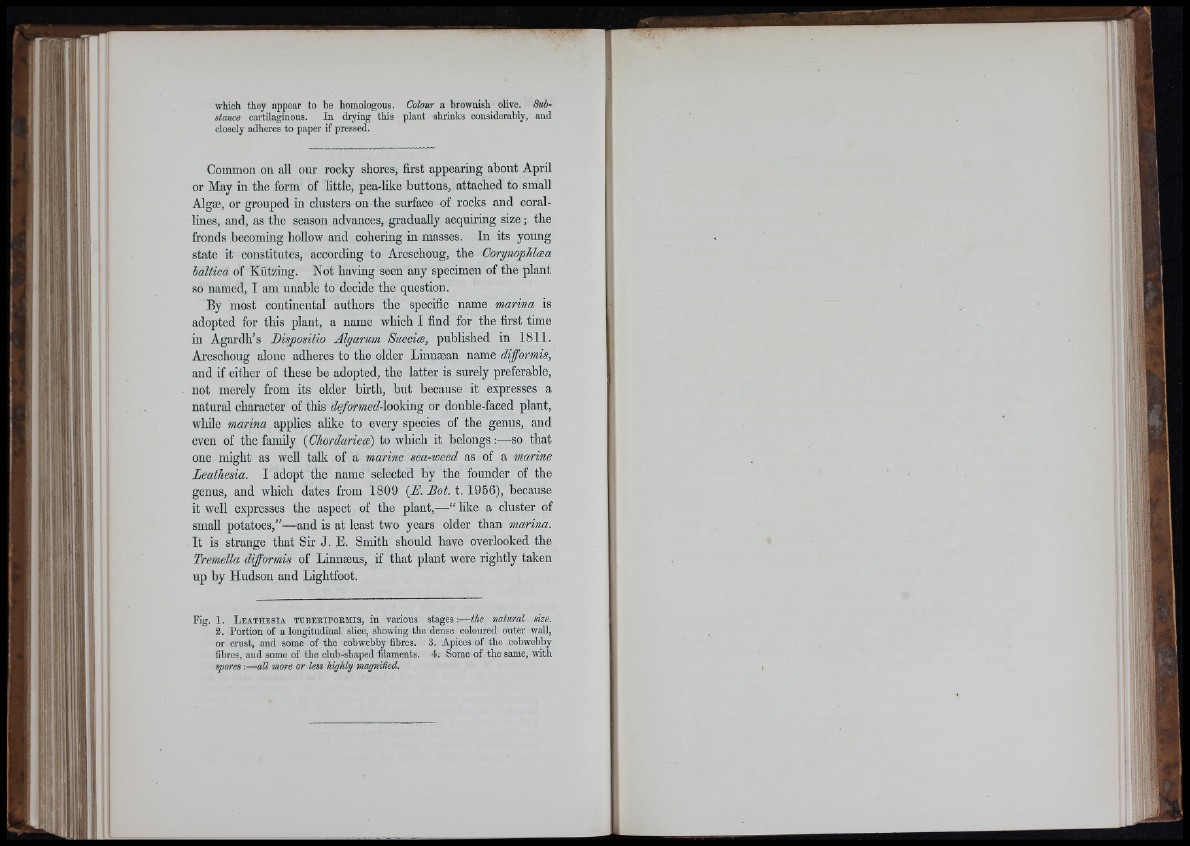
which they appear to be homologous. Colour a brownish olive. Sub-
statice cartilaginous. In drying this plant shrinks considerably, and
closely adheres to paper if pressed.
Common on all our rocky shores, first appearing about April
or May in the form of little, pea-like buttons, attached to small
Algæ, or grouped in clusters on the surface of rocks and corallines,
and, as the season advances, gradually acquiring size ; the
fronds becoming hollow and cohering in masses. In its young
state it constitutes, according to Areschoug, the CorynopJiloea
baltica of Kiitzing. Not having seen any specimen of the plant
so named, I am unable to decide the question.
By most continental authors the specific name marina is
adopted for this plant, a name which I find for the first time
in Agardh’s Dispositio Algarum Sueciæ, published in 1811.
Areschoug alone adheres to the older Linnæan name difformis,
and if either of these be adopted, the latter is surely preferable,
not merely from its elder birth, but because it expresses a
natural character of this deformed-\oo\img or double-faced plant,
while marina applies alike to every species of the genus, and
even of the family {Cliordarieæ) to which it belongs :—so that
one might as well talk of a marine sea-weed as of a marine
Leathesia. I adopt the name selected by the founder of the
genus, and which dates from 1809 {L. Bot. 1 .1956), because
it well expresses the aspect of the plant,—“ like a cluster of
small potatoes,”—and is at least two years older than marina.
It is strange that Sir J. E. Smith should have overlooked the
Tremella difformis of Linnæus, if that plant were rightly taken
up by Hudson and Lightfoot.
Fig. 1. L e a t h e s ia t u b e k i e o k m i s , in various stages :— the mtural size.
2. Portion of a longitudinal slice, showing the dense coloured outer wall,
or crust, and some of the cobwebby fibres. 3. Apices of the cobwebby
fibres, and some of the club-shaped filaments. 4. Some of the same, with
s :— all i